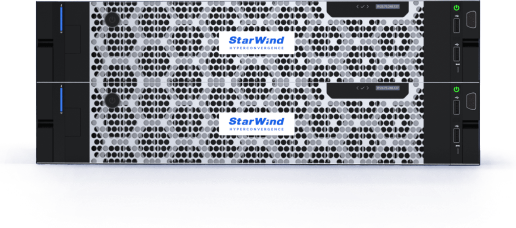Introduction
Server virtualization helped businesses increase productivity and efficiency of their IT infrastructures by abstracting physical servers’ workloads from the underlying hardware with little to no loss of functionality, VDI applied quite the same logic. Desktops and applications run inside virtual machines that are hosted centrally, either on a server or in the cloud. The purpose of VDI is to deliver fully-featured user desktops to a variety of devices including conventional PCs, thin clients, and even zero-client endpoints. But how something that was seen as a bright alternative to the traditional server-based computing model used by Citrix and Microsoft Terminal Services a decade ago ended up being a niched deployment?
Houston, we have a problem…we need to scale our VDI
Despite delivering certain benefits, such as enabling users to access their desktops and applications remotely, providing centralized desktop management and data security, there are certain challenges with VDI as well. Probably, the most common one is scaling.
In a VDI environment, the virtual desktops all share common storage systems, often a SAN or NAS device shared among the multiple servers that house virtual desktops. Continuous company growth and increased VDI workloads lead to the point where the amount of I/O hitting the storage can be measured in thousands of IOPS. As the result, storage system can’t handle all these demands, ending up in IT stuff being overwhelmed with the huge stack of JBODs that needs to be managed and maintained. Sure, you can go all-flash, if you have a wallet deep enough to cover the expenses, but this is not always the case.
Moreover, whereas server workloads are scaled based on individual resource needs, VDI-based workloads are mostly scaled linearly, requiring RAM, compute, and storage to be added simultaneously. Generally speaking, when creating new virtual desktops, you need not just storage, but CPU, and RAM, which might be complicated and pricey.
Advice #1 Use desktop assessment tools
Quite an obvious advice, however, by using desktop assessment tools, you can identify both the users and desktops which are the best candidates to move into a virtual desktop environment and the order in which those user groups and desktops should be virtualized. This will help you in creating a solid plan for your VDI project and further scale it properly without purchasing extra hardware. Such tools are VMware Virtual Desktop Infrastructure Assessment, Liquidware Labs’ Stratusphere FIT, just to name a few.
Advice #2 Make your virtual desktops consume less storage
Deduplication and compression. Simple as that, use these technologies for your virtual desktops so that they consumed less space on the storage layer. As a result, you can store more virtual desktops on what you already have. Deduplication also significantly reduces the I/O footprint for VDI systems. With efficient caching of deduplicated desktop systems, you can avoid I/O attacks during booting and login that can negatively impact performance otherwise.
Advice #3 Try hyperconvergence to scale easily
Probably, you already know it…yes, hyperconvergence. It can serve as a basis for your VDI project or as a way out of a dead end when you have already deployed VDI but are facing some scaling issues. Hyper-converged solutions come as “building blocks” uniting storage and compute resources. Therefore, hyperconvergence natively enables linear resource scalability which is necessary for VDI environments to be able to keep pace with growth. By adding nodes, you can easily provide your new virtual desktops with all what they need – RAM, storage, CPU. Moreover, you can integrate a hyper-converged appliance to your existing infrastructure and solve the scaling issue with VDI. For example, you may choose among such hyper-converged products as DELL EMC ScaleIO Ready Nodes, VMware vSAN ReadyNodes or StarWind HyperConverged Appliances.
Conclusion
VDI is not for everyone, so plan your desktop virtualization initiative wisely. Desktop assessment tools will come in handy and help you determine the best candidates for virtualization along with resources needed for its future sizing. Run some deduplication tools to reduce the amount of storage consumed by your virtual desktops. And finally, hyperconvergence will be an optimal solution to eliminate unnecessary expenses and all that pain when you face the need of scaling your virtual desktop infrastructure.



